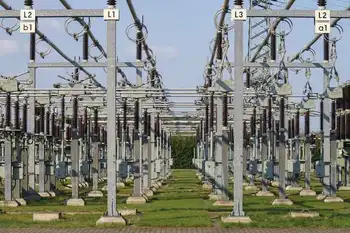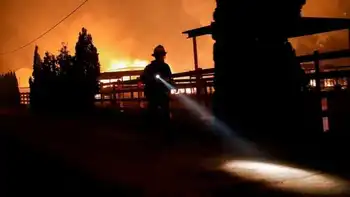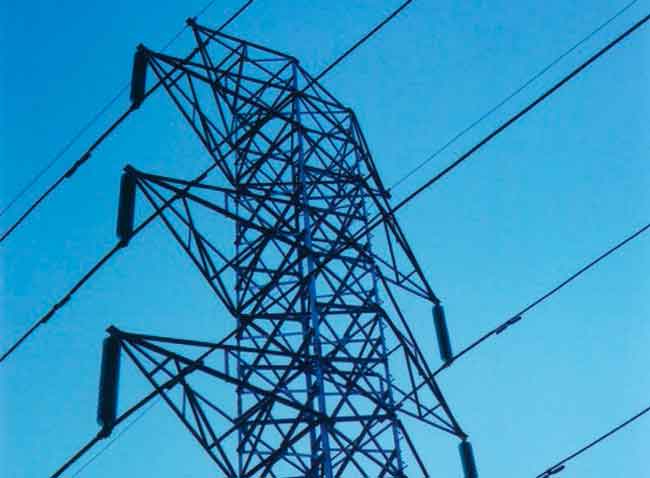Helicopters dumping seawater onto nuclear rods
ZAO, JAPAN - Military helicopters dumped loads of seawater onto JapanÂ’s stricken nuclear complex, turning to combat-style tactics while trying to cool overheated uranium fuel that may be on the verge of spewing out more radiation.
Plant operators also said they were racing to finish a new power line that could restore cooling systems and ease the crisis at the Fukushima Dai-ichi plant on the countryÂ’s northeast coast.
The top U.S. nuclear regulatory official gave a far bleaker assessment of the situation than the Japanese, and the U.S. ambassador said the situation was “deteriorating” while warning U.S. citizens within 80 kilometres of the complex to leave the area or at least remain indoors.
Ottawa is also warning Canadians to stay well away from the plant. The department of Foreign Affairs says Canadians within 80 kilometres should evacuate the area as a further precautionary measure.
Ottawa says there isnÂ’t a radiation health risk to Canadians traveling into or out of Japan so long as they have not been within the evacuation zone.
Australia, Britain and Germany advised their citizens in Japan to consider leaving Tokyo and earthquake-affected areas, but so far Canada has said no evacuation of its citizens has been planned.
The Japanese government said it had no plans to expand its mandatory, 20-kilometre exclusion zone around the plant, while also urging people within 30 kilometres to stay inside.
The troubles at the nuclear complex were set in motion last week's 9.0-magnitude earthquake and tsunami knocked out power and destroyed backup generators needed for the reactors' cooling systems. That added a nuclear crisis on top of twin natural disasters that likely killed well more than 10,000 people and left hundreds of thousands homeless.
Four of the plant's six reactors have faced serious crises involving fires, explosions, damage to the structures housing reactor cores, partial meltdowns or rising temperatures in the pools used to store spent nuclear fuel. Officials also recently announced that temperatures are rising in the spent fuel pools of the last two reactors.
Two Japanese military CH-47 Chinook helicopters began dumping seawater on the complex's damaged Unit 3 at 9:48 a.m. local time, defence ministry spokeswoman Kazumi Toyama said. The choppers dumped at least four loads on the reactor in just the first 10 minutes, though television footage showed much of it appearing to disperse in the wind.
Chopper crews were flying missions of about 40 minutes each to limit their radiation exposure, passing over the reactor with loads of about 7,500 litres of water.
The dousing is aimed at cooling the Unit 3 reactor, as well as replenishing water in that unit's cooling pool, where used fuel rods are stored, Toyama said. The plant's owner, Tokyo Electric Power Co., said earlier that pool was nearly empty, which would cause the rods to overheat and emit even more radiation.
Defence Minister Toshifumi Kitazawa told reporters that emergency workers had no choice but to try the water dumps before it was too late.
U.S. officials, meanwhile, said Unit 4 also was seriously at risk.
U.S. Nuclear Regulatory Commission Chairman Gregory Jaczko said at a congressional hearing in Washington that all the water was gone from that unit's spent fuel pool. Jaczko said anyone who gets close to the plant could face potentially lethal doses of radiation.
“We believe radiation levels are extremely high,” he said.
Tokyo Electric executives said that they believed the rods in that pool were covered with water, but an official with Japan's nuclear safety agency later expressed skepticism about that and moved closer to the U.S. position.
“Considering the amount of radiation released in the area, the fuel rods are more likely to be exposed than to be covered,” Yuichi Sato said.
Chief Cabinet Secretary Yukio Edano said that along with the helicopter water drops, special police units would use water cannons — normally used to quell rioters — to spray water onto the Unit 3 storage pool. The high-pressure water cannons will allow emergency workers to stay farther away.
Military vehicles designed to extinguish fires at plane crashes will also be used, said Gen. Ryoichi Oriki.
Emergency workers were forced to temporarily retreat from the plant when radiation levels soared, losing precious time. While the levels later dropped, they were still too high to let workers get close.
The storage pools need a constant source of cooling water. Even when removed from reactors, uranium rods are still extremely hot and must be cooled for months, possibly longer, to prevent them from heating up again and emitting radioactivity.
A core team of 180 emergency workers has been at the forefront of the struggle at the plant, rotating in and out of the complex to try to reduce their radiation exposure.
But experts said that anyone working close to the reactors was almost certainly being exposed to radiation levels that could, at least, give them much higher cancer risks.
“I don't know any other way to say it, but this is like suicide fighters in a war,” said Keiichi Nakagawa, associate professor of the Department of Radiology at University of Tokyo Hospital.
Experts note, though, that radiation levels drop quickly with distance from the complex. While elevated radiation has been detected well outside the evacuation zone, experts say those levels are not dangerous.
U.S. officials were taking no chances, and Prime Minister Naoto Kan and U.S. President Barack Obama spoke about the crisis.
In a statement, U.S. Ambassador John V. Roos made his evacuation recommendation “in response to the deteriorating situation” at the Fukushima complex. In Washington, the State Department warned U.S. citizens to consider leaving the country, and offered voluntary evacuation to family members and dependants of U.S. personnel in the cities of Tokyo, Yokohama and Nagoya.
Chartered planes also would be brought in to help private American citizens who wished to leave, the State Department said.
While American officials have been careful not to criticize Japan's response, they have made clear it's difficult to ascertain what is going on.
“It's a very fluid and indeed it's a very confused situation,” U.S. Deputy Energy Secretary Daniel Poneman told reporters.
Japanese officials raised hopes of easing the crisis, saying they may be close to bringing power back to the plant. The new power line would revive electric-powered pumps, making it easier for workers to control the high temperatures.
Tokyo Electric officials said they hoped to have the new power line working, and had electricians standing by to connect the power plant.
Nearly a week after the disaster, police said more than 452,000 people were staying in schools and other shelters, as supplies of fuel, medicine and other necessities ran short. Both victims and aid workers appealed for more help.
“There is enough food, but no fuel or gasoline,” said Yuko Niuma, 46, as she stood looking out over Ofunato harbour, where trawlers were flipped on their sides.
Along the tsunami-savaged coast, people must stand in line for food, gasoline and kerosene to heat their homes. In the town of Kesennuma, they lined up to get into a supermarket after a delivery of key supplies, such as instant rice packets and diapers.
Each person was only allowed to buy 10 items, NHK television reported.
With diapers hard to find in many areas, an NHK program broadcast a how-to session on fashioning a diaper from a plastic shopping bag and a towel.
More than 5,300 people are officially listed as dead, but officials believe the toll will climb to well over 10,000.
Other countries have complained that Japan has been too slow and vague in releasing details about its rapidly evolving crisis at the complex of six reactors along Japan's northeastern coast.
Related News

Clean, affordable electricity should be an issue in the Ontario election
TORONTO - Ontario electricity demand is forecast to soon outstrip supply, a problem that needs attention in the upcoming provincial election.
Forecasters say Ontario will need to double its power supply by 2050 as industries ramp up demand for low-emission power and consumers switch to electric vehicles and space heating. But while the Ford government has made a flurry of recent energy announcements, including a hydrogen project at Niagara Falls and an interprovincial agreement on small nuclear reactors, it has not laid out how it intends to bulk up the province’s power supply.
“Ontario is entering a period of widening electricity shortfalls,”…




